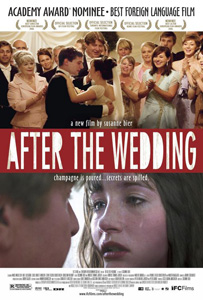
Background :
Trinidad
and Tobago lies in the Caribbean Sea off the northeast coast of Venezuela.
Christopher Columbus gave Trinidad & Tobago its name in 1498.
Carib Indians inhabited Tobago. Trinidad remained in Spanish possession,
despite raids by other European nations, until it was ceded to Britain in 1802.
Tobago passed between Britain and France several times, but it was ultimately
given to Britain in 1814. Slavery was abolished in 1834. Between 1845 and 1917,
thousands of indentured workers were brought from India to work on sugarcane
plantations. In 1889 Trinidad and Tobago was made a single colony.The people of Tobago are called Tobagonians and those from Trinidad are called Trinidadians or Trinis. Together the people of Trinidad and Tobago are referred to as “Trinbagonians.” Trinidad
Carnival occurs every year on the Monday and Tuesday before Ash
Wednesday (Catholic calendar). The partying and other festivities begin
months before and the costume making at the local mas camps begin even
earlier. Trinidad and Tobago Carnival has been consistently ranked as one of the top ten Carnival
celebrations in the world.
Population: 1,349,667 (2015 est.)
Ethnic groups:
- 35.43% Indian
- 34.22% African
- 15.16% Multiracial (non-Dougla)
- 0.59% European
- 0.30% Chinese
- 0.11% Amerindian
- 0.08% Arab
- 0.06% Portuguese
- 6.22% Undeclared
- 0.17% Other
Religions:
- 55.3% Christian
- 18.2% Hindu
- 5.0% Muslim
- 1.2% Bahá'í
- 0.9% Yoruba (Orisha)
- 0.3% Rastafarian
- 5.8% Other
- 11.1% Not stated
- 2.2% None
Government Type:
Democracy
Capital:
Port of Spain
GDP Per Capita:
$31,333 (2017 estimate)
Currency:
Trinidad and Tobago dollar (TTD)
Unemployment Rate:
3.80 percent
Economic Growth:
Trinidad and
Tobago has the features of a ‘dual economy’ and this ‘duality’ feature raises questions
regarding the sustainability of the current growth rate and the possible present and future
binding constraints to growth. While fiscal
policy is moving in the right direction, and many of the constraints to growth have already
been eliminated, the underdevelopment of the non-energy tradable sector could seriously
hamper Trinidad and Tobago’s future economic growth. The Open Forest analysis suggests
that the export product space is not very well diversified and the prospects for diversification
appear grim. The micro data reveals that the main concerns of the business owners include
macro risk, low profitability, lack of complementary inputs such as poor infrastructure, and
rising crime.
Industries:
Largest
natural deposit of asphalt in the world. World’s leading exporters of
natural gas.
k Key Social Forces & Events impacted the country:
d Arena Massacre and Invasion of Tobago.
National Disasters & Diseases:
1993 Trinidad hurricane:
The strong winds downed trees and destroyed hundreds of houses, leaving about 1,000 people homeless. Later, the hurricane crossed the northeastern portion of Venezuela, where power outages and damaged houses were reported.
History of Cinema:
Trinidad and Tobago cinema evidently one of the most progressive of all emerging postcolonial cinema is still largely unnoticed as a national cinema with particular characteristics. Many may think of it as a challenge or even an attempt to describe and identify a important body of feature films that are associated with this T & T.
The reasons for this angle are many and include the political positioning of the postcolonial world as receivers rather than producers of cinema in much academic and prominent discourse, as well as the fact that many of the nation’s films are produced by filmmakers in the Trinbagonian diaspora. A shortage of distribution channels and film archives also contribute to the invisibility of Trinidadian film products.
Important Genres and Conventions In films from this country
In terms of cinematic style, filmmakers in Trinidad and Tobago take a variety of approaches.
However, a clear gravitation towards the natural is evident. I refer to “the natural” as opposed to “naturalistic” because the aesthetic treatment of these films can be subtle and “realistic,” in keeping with the look and feel of Italian neorealism for example, or highly stylized, with a brightness and colour palette that seems dream-like or other-worldly. Still, the natural or real world flora, fauna, on location shooting is always a key element.
Notable Films:

Summary:
Contract Killers is a 2008 action film about a female assassin on the run from the law. The film was directed by Justin B. Rhodes, and stars Frida Farrell, Nick Mancuso, and Rhett Giles with an appearance by Paul Cram. A CIA assassin attempts to break out of the contract killing business to try to lead a normal life. But when "the system" tracks her down and frames her for the death of her husband, she embarks on a path of revenge that leads her back into the life she tried to hard to abandon.

a Summary:
Limbo is a Norwegian drama film, written and directed by Maria Sodahl.The movie takes place in the 1970s and depicts a so-called expatriate-group at Trinidad, associated with the oil industry.Sonia moves with her kids to Trinidad where her husband Jo is working in the oil business. The milieu change and the discovery of an the affair her husband has been having makes her lose grip and go into a limbo.

Summary:
The Mystic Masseur is a 2001 Merchant Ivory film based on the novel of the same name by V. S. Naipaul. It is one of relatively few films directed by Ismail Merchant, who is better known as the producer in the Merchant Ivory partnership, and addresses issues of Hindu subculture on the island of Trinidad.
Notable Film Directors:
Frances-Anne Solomon is a Trinidadian filmmaker, writer, producer, distributor and entrepreneur.
Sullivan Walker was a Trinidadian actor who played numerous small and recurring roles on television shows from 1980 until 2005. Walker migrated to New York from Trinidad in 1969 and became an actor, writer, director and teacher.
Notable Actors:

Geoffrey Lamont Holder was a Trinidadian-American actor, voice actor, choreographer, singer, director and painter.

Geoffrey Lamont Holder was a Trinidadian-American actor, voice actor, choreographer, singer, director and painter.
References :
Movies, TV and Celebrities." IMDb. IMDb.com, n.d. Web. 08 May 2017.
Cinema of Trinidad and Tobago." Wikipedia. Wikimedia Foundation, 08 May 2017. Web. 08 May 2017.
History of Cinema in Trinidad http://www.filmbirth. com/trinidad.htm
Trinidad and Tobago Film Company official website http://www.trinidadandtobagofilm.com/
CHECKLIST FOR PLAGIARISM
1) ( X ) I have not handed in this assignment for any other class.
2) ( X ) If I reused any information from other papers I have written for other classes, I clearly explain that in the paper.
3) ( X ) If I used any passages word for word, I put quotations around those words, or used indentation and citation within the text.
4) ( X ) I have not padded the bibliography. I have used all sources cited in the bibliography in the text of the paper.
5) ( X ) I have cited in the bibliography only the pages I personally read.
6) ( X ) I have used direct quotations only in cases where it could not be stated in another way. I cited the source within the paper and in the bibliography.
7) ( X ) I did not so over-use direct quotations that the paper lacks interpretation or originality.
8) ( X ) I checked yes on steps 1-7 and therefore have been fully transparent about the research and ideas used in my paper.





